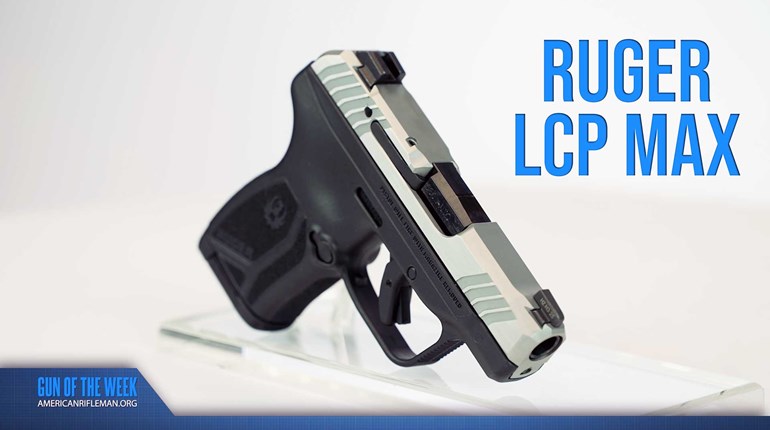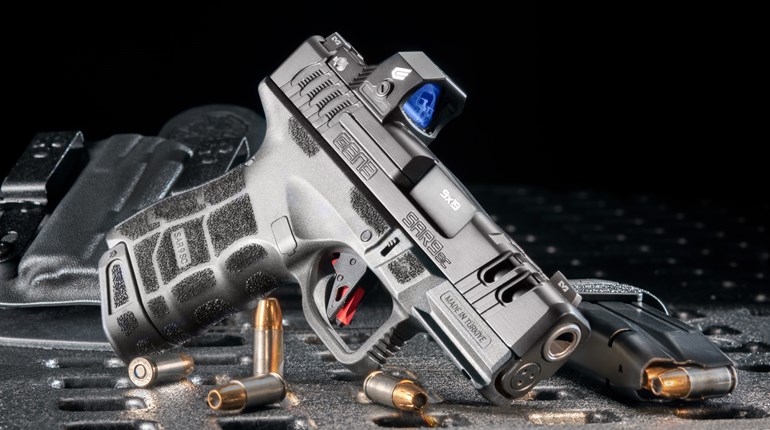
Pistol-caliber carbines are hot. Rifle designs built as pistols are hot. Ruger has combined the two and added even more.
The name tells all, as “PC” is for “pistol caliber.” Charger is what Ruger calls the models that are pistols, but derived from rifle designs. They originated these with a pistol based on the 10/22 rifle. The 9 mm PC is not the first 9 mm carbine Ruger made. They offered a version back in the 1990s, but it was not well-received, due in part to the fact that the idea of a pistol-caliber carbine (PCC) had not yet caught on. And the earlier models were not the most-elegant solutions.
The new model changes that.

First of all, the new PC Charger, unlike the 1990s PCC, is a take-down design. You can easily unload, lock the bolt back, disengage the lock, twist and separate the pistol into two pieces. This makes transporting and cleaning it a whole lot easier.
Second, Ruger did not make the new 9 mm PC (original or Charger) a one-magazine design. Each one comes set up to use Ruger SR series and Security 9 magazines, and comes with a Glock magazine well. You can also order a magazine well to use Ruger American magazines in it. You are truly out in the boonies if you cannot find one of the magazines the PC Charger can use. Magazines from 10 shots (needed in some jurisdictions) up to the maximum on the market, will all work in the pistol. Its magazine release is a button on the side of the magazine well.

The chassis is a glass-filled polymer, where the glass fibers act as rebar to the concrete of the polymer shell. It is impervious to all known solvents, including New Jersey tap water, and the shell is rigid due to the reinforcement. The rear of the chassis is molded to accept a standard AR-15 pistol grip, so you can swap the provided one with whatever design or maker you find works best for you.
There are no sights provided with the pistol, so you will have to find something. The top of the chassis has a Picatinny rail. A red-dot or low-power magnifying optic would make aiming the PC Charger much easier.
The handguard is not polymer; it is a CNC-milled anodized aluminum part that fits around the barrel. It does not have a rail on it, but the handguard has MLok slots at 3, 6 and 9 o’clock. You can attach a light, laser or combination accessory in any one of them. The handguard stays attached to the barrel assembly when you dismount the PC Charger into two pieces.
 The receiver is also anodized aluminum. The PC Charger is a blowback design, as the 9 mm Parabellum does not need a locked breech on a pistol of this type. Ruger has built in its dead-blow design, which uses a custom tungsten dead-blow weight to soak up the felt recoil. This also allows them to shorten the bolt travel distance to help keep the PC Charger compact. The bolt is machined from a solid piece of chrome-moly steel alloy.
The receiver is also anodized aluminum. The PC Charger is a blowback design, as the 9 mm Parabellum does not need a locked breech on a pistol of this type. Ruger has built in its dead-blow design, which uses a custom tungsten dead-blow weight to soak up the felt recoil. This also allows them to shorten the bolt travel distance to help keep the PC Charger compact. The bolt is machined from a solid piece of chrome-moly steel alloy.
Ruger sends the PC Charger with a hand stop, attached at six o’clock on the handguard. This is a customary accessory on pistol builds, as your hand could otherwise be a bit too close to the muzzle for comfort.
The trigger on the PC Charger is a derivative of the 10/22. It is proven, rugged, reliable and every gunsmith in the land knows how to service it. The safety is a cross-button in front of the trigger guard, and the bolt release is a metal tab forward of the trigger guard.
The barrel is also chrome-moly alloy steel, but it is cold hammer forged, the latest in barrel-making technology. At 6.5 inches, it will get a bit more velocity out of a 9 mm loading than a pistol with a shorter barrel will, but not by a lot.
The barrel is threaded at the muzzle, so you can attach a muzzle brake, flash hider or suppressor, should you wish.
On the rear of the receiver is an integral Picatinny rail segment. This is where you can attach a sling or arm brace. Ruger also incorporates a pair of QD sling sockets, in case that is the method you use to attach a sling.
Changing magazine wells is easy. Just unload the PC Charger, loosen the two receiver screws on the bottom (they are retained, so they won’t fall out) and lift the upper half off the lower half. Press the magazine release, lift out one well and replace it with another. Then reassemble the two halves.
The magazine release and the charging handle can both be swapped from the right side to the left side. Installing an arm brace is easy. You simply need a model that uses a Picatinny clamp as the attachment point.

The PC Charger is definitely fun to shoot. It works with all standard 9 mm Parabellum ammunition. As a defensive tool, the compactness of the PC Charger, and the ability to readily mount a light, laser or both, makes it very attractive.


































